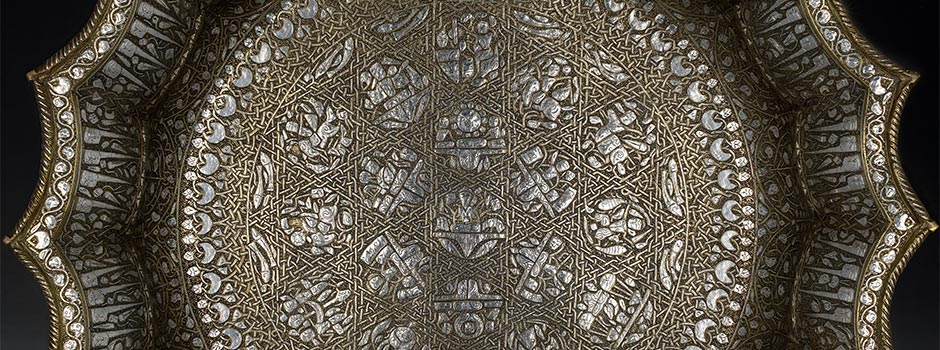
ART AUCTION (31 March 2021) Sotheby’s Spring Sale of Arts of the Islamic World & India
Mar 30, 2021 EVENT, Art Auction

The auction will be led by a magnificent twelfth-century silver-inlaid scalloped basin adorned with astrological designs (est. £1,000,000-1,500,000), measuring fifty centimetres in diameter. Crafted in the shape of the sun and featuring the zodiac signs, solar symbols, planets, animal heads and anthropomorphic calligraphic scripts, this rare basin was made to symbolise the universe and harness its energy - evidence of a counterculture of astrology in the Muslim world, which predated Islam and continues to this day. A courtly object, the dish would have been made for a ruler to assert their power within both an earthly and cosmic sphere whilst also having a protective and auspicious function. It has never previously been exhibited, having remained in the same private family collection for decades, so is set to make its auction debut.
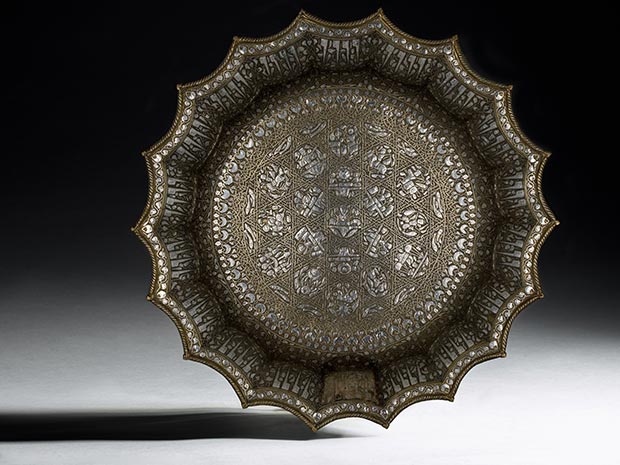 A rare and important Khurasan silver-inlaid brass basin, circa 1200 / Courtesy of Sotheby's
A rare and important Khurasan silver-inlaid brass basin, circa 1200 / Courtesy of Sotheby's
Continuing the theme of astronomy is a unique 14th-century Astrolabe, the only known version created by a Muslim artist in a Christian-ruled city (est. £600,000-800,000). Made in Tudela, which was part of Muslim Andalusia until 1119 when the city was taken by the Christian king, Alfonso I of Aragon, this rare astrolabe speaks to the vibrant intellectual exchange between Islam and Christendom at the cultural crossroads of Medieval Spain.
_.jpg) A unique gilt-brass astrolabe signed by Ahmad ibn Abu Abd Allah al-Qurtubi al-Yamani, Spain, Tudela, dated 737 AH1336-37 AD, 12.1cm in diam. / Courtesy of Sotheby's
A unique gilt-brass astrolabe signed by Ahmad ibn Abu Abd Allah al-Qurtubi al-Yamani, Spain, Tudela, dated 737 AH1336-37 AD, 12.1cm in diam. / Courtesy of Sotheby's
Among the manuscripts in the sale is an exceptional Mamluk Quran dated 1514 AD (est. £300,000-500,000), which as a complete manuscript signed by a well-known master is a great rarity. It is a very fine example of high-quality manuscript production in the late Mamluk period. Made for the Chief Justice of Jerusalem and Nablus, through its patronage and ownership the Quran bears ties to two of the holiest places of Islam - Jerusalem and Medina.
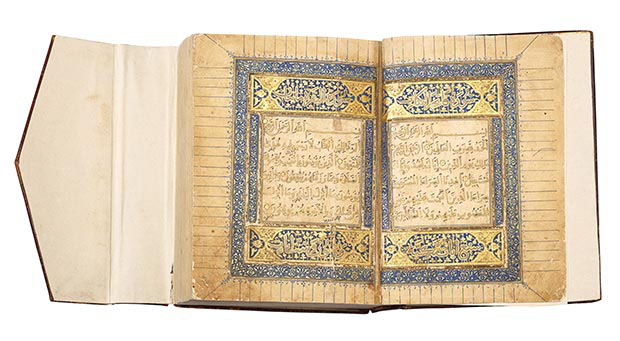 A fine illuminated Qur'an, Egypt, Mamluk, dated 920 AH1514 AD, Signed by Abu al-Fadl Muhammad ibn Abd al-Wahhab al-Shafi al-Sunbati al-Araj, dated 920 AH1514 AD / Courtesy of Sotheby's
A fine illuminated Qur'an, Egypt, Mamluk, dated 920 AH1514 AD, Signed by Abu al-Fadl Muhammad ibn Abd al-Wahhab al-Shafi al-Sunbati al-Araj, dated 920 AH1514 AD / Courtesy of Sotheby's
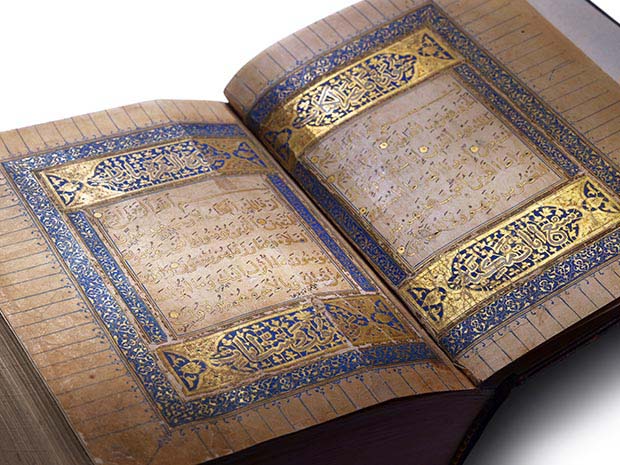 A fine illuminated Qur'an, Egypt, Mamluk, dated 920 AH1514 AD, Signed by Abu al-Fadl Muhammad ibn Abd al-Wahhab al-Shafi al-Sunbati al-Araj, dated 920 AH1514 AD / Courtesy of Sotheby's
A fine illuminated Qur'an, Egypt, Mamluk, dated 920 AH1514 AD, Signed by Abu al-Fadl Muhammad ibn Abd al-Wahhab al-Shafi al-Sunbati al-Araj, dated 920 AH1514 AD / Courtesy of Sotheby's
Among the fine carpets and rugs is a beautiful mid-16th-century silk prayer rug (est. £300,000-500,000), a royal commission from the court of the Safavid shah of Iran when artistic production reached a peak of technical refinement. It is one of very few in existence, with the last similar piece offered at auction in 2010. Using ten different colours of dye, the quality is comparable to that of manuscript illumination. Also from the Ottoman world are a group of textiles from the collection of Viscount and Lady d'Abernon and a pristine crimson velvet double panel, Turkey, Bursa or Istanbul, first half of the 17th century. Other lots include an Ottoman silk velvet and metal thread panel with crowns, probably Bursa, Turkey, 17th century (est. £7,000 - 10,000); an Ottoman silk velvet and metal thread panel with stylised carnations, probably Bursa, Turkey, 17th century (est. £5,000-7,000) and a Suzani embroidery, Uzbekistan, 19th century (est. £15,000-25,000)
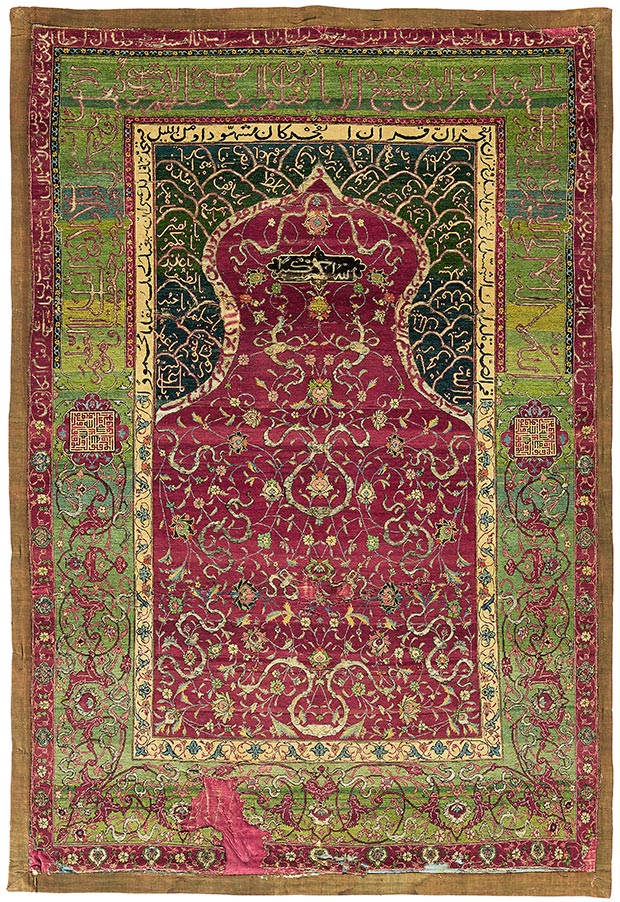 A Safavid niche rug, central or northwest Persia, mid-16th century / Courtesy of Sotheby's
A Safavid niche rug, central or northwest Persia, mid-16th century / Courtesy of Sotheby's
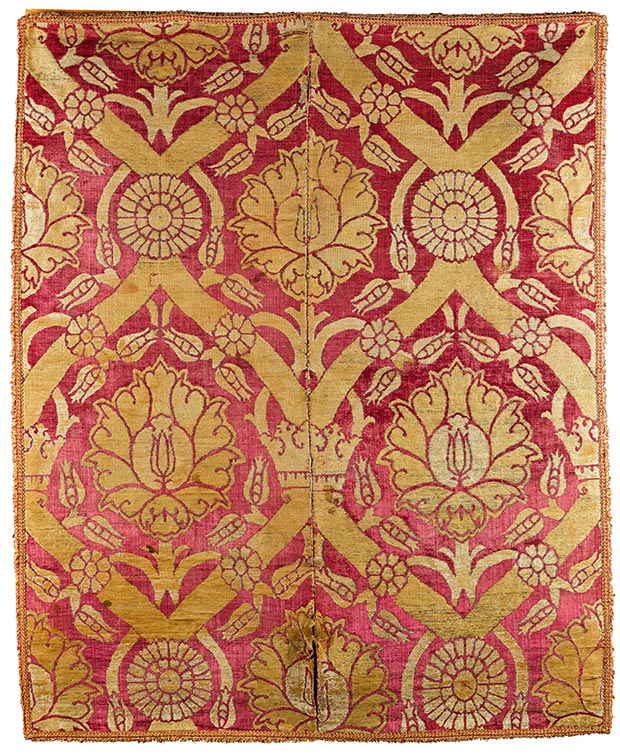 An Ottoman silk velvet and metal thread panel with crowns, probably Bursa, Turkey, 17th century / Courtesy of Sotheby's
An Ottoman silk velvet and metal thread panel with crowns, probably Bursa, Turkey, 17th century / Courtesy of Sotheby's
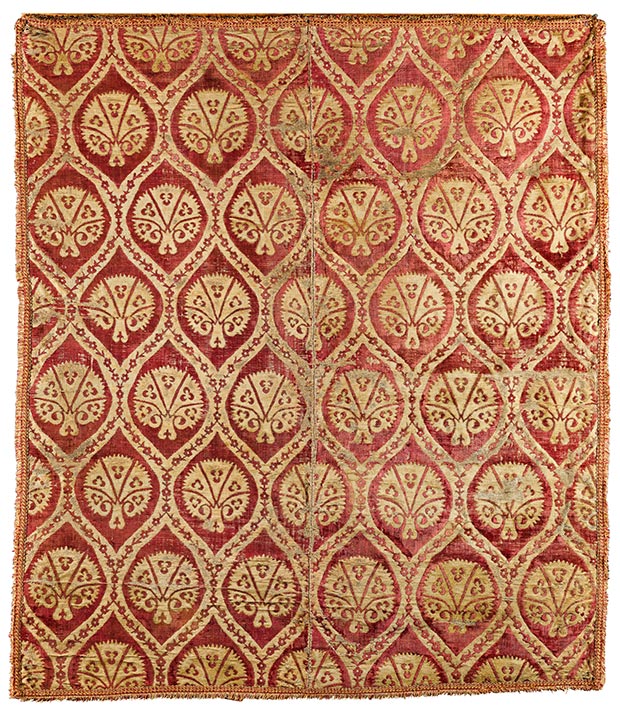 An Ottoman silk velvet and metal thread panel with stylised carnations, probably Bursa, Turkey, 17th century / Courtesy of Sotheby's
An Ottoman silk velvet and metal thread panel with stylised carnations, probably Bursa, Turkey, 17th century / Courtesy of Sotheby's
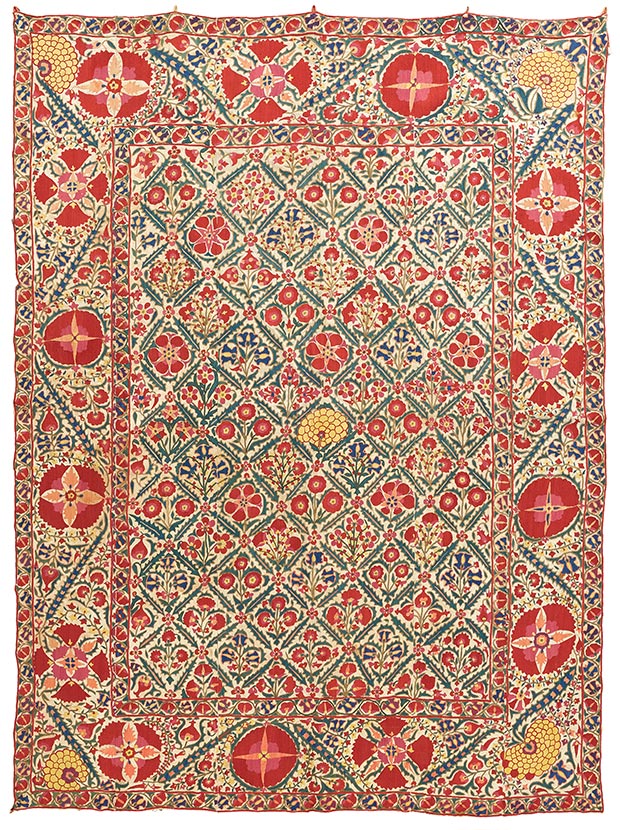 A Suzani embroidery, Uzbekistan, 19th century / Courtesy of Sotheby's
A Suzani embroidery, Uzbekistan, 19th century / Courtesy of Sotheby's
An exceptional mother-of-pearl casket (est. £250,000-350,000), designed with panels of floral trees and vines against a background of spiralling stems, this piece exemplifies the complex workmanship of Gujarat in the sixteenth century. Capturing the imagination of European courts, furnishings of mother-of-pearl from India were listed in Royal inventories since the early sixteenth century. It belongs to a rare group of objects, most of which are now in museum collections, and with less than ten known caskets from this period, is one of the most outstanding in terms of the quality of its design, execution and condition.
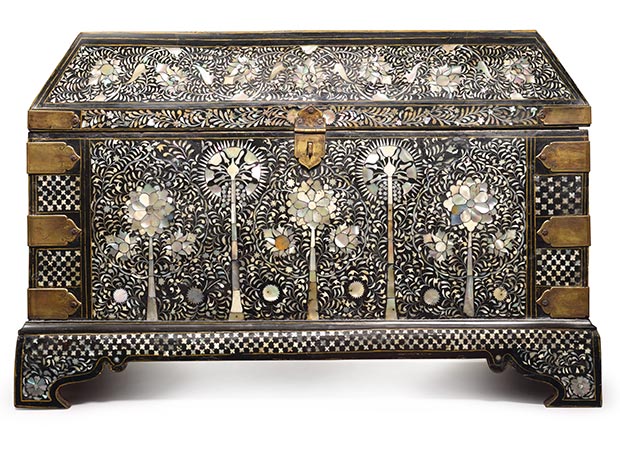 An exceptional mother-of-pearl casket, India, Gujarat, circa 1600 (est. £250,000-350,000) / Courtesy of Sotheby's
An exceptional mother-of-pearl casket, India, Gujarat, circa 1600 (est. £250,000-350,000) / Courtesy of Sotheby's
Amongst the paintings in the sale is a newly-discovered 16th/17th-century portrait of Suleyman the Magnificent (est. £80,000-120,000), vividly capturing on copper the acuity and presence of the iconic Ottoman ruler at the age of forty-three. The vibrant Venetian brushwork opens a window onto a narrative of artistic exchanges between Venice and the Ottomans in the 1530s.
,-Italy,-second-half-16th-century_.jpg) A rare and important portrait of Suleyman the Magnificent (r.1520-66), Italy, second half 16th century/ Courtesy of Sotheby's
A rare and important portrait of Suleyman the Magnificent (r.1520-66), Italy, second half 16th century/ Courtesy of Sotheby's
The sale also offers the first known European representations of the Holy Sites of Islam, Mecca and Medina, by Sir Jean Chardin (est. £60,000-80,000). Chardin set off for the Middle East in 1664 and spent eleven years travelling. In Persia, he was appointed Royal Merchant by the Safavid Shah and back in England, King Charles II appointed him jeweller to the royal court and knighted him. These drawings were made according to the information given to him by a Muslim he met in the course of his travels and depict the colonnade, the Kaaba, the buildings and minarets. The drawings were formerly in the collection of polymath John Evelyn (1630-1706), who was one of the founders of the Royal Society.
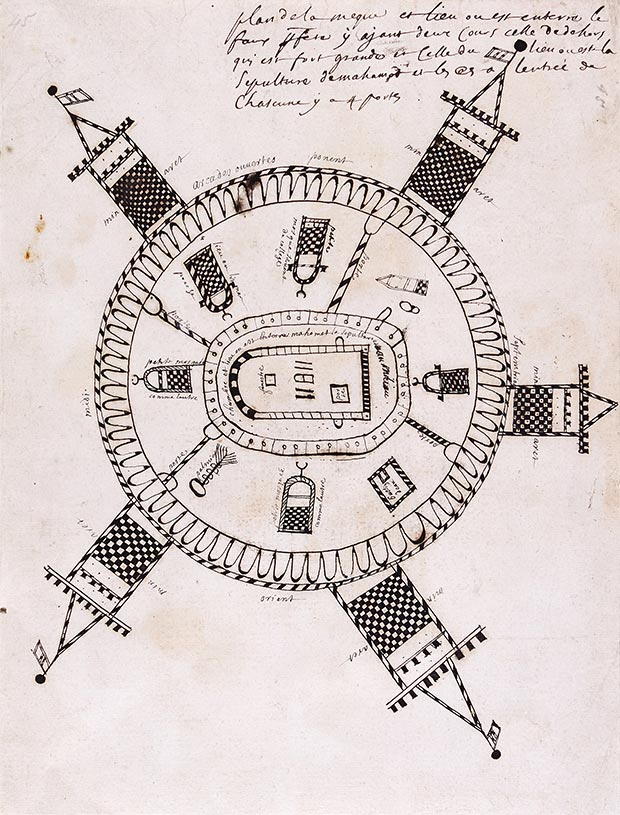 The First European Representations of Mecca and Medina by Sir John Chardin / Courtesy of Sotheby's
The First European Representations of Mecca and Medina by Sir John Chardin / Courtesy of Sotheby's
Other lots include a Mamluk enamelled glass beaker, Egypt, 13th century (est. £30,000-50,000); a Mamluk enamelled glass beaker with musicians, Egypt, late 13th century (est. £30,000-50,000); and a Gem-Set Gold Double-Headed Eagle Pendant, Morocco, 18th Century (est. £20,000-30,000).
 A Mamluk enamelled glass beaker, Egypt, 13th century / Courtesy of Sotheby's
A Mamluk enamelled glass beaker, Egypt, 13th century / Courtesy of Sotheby's
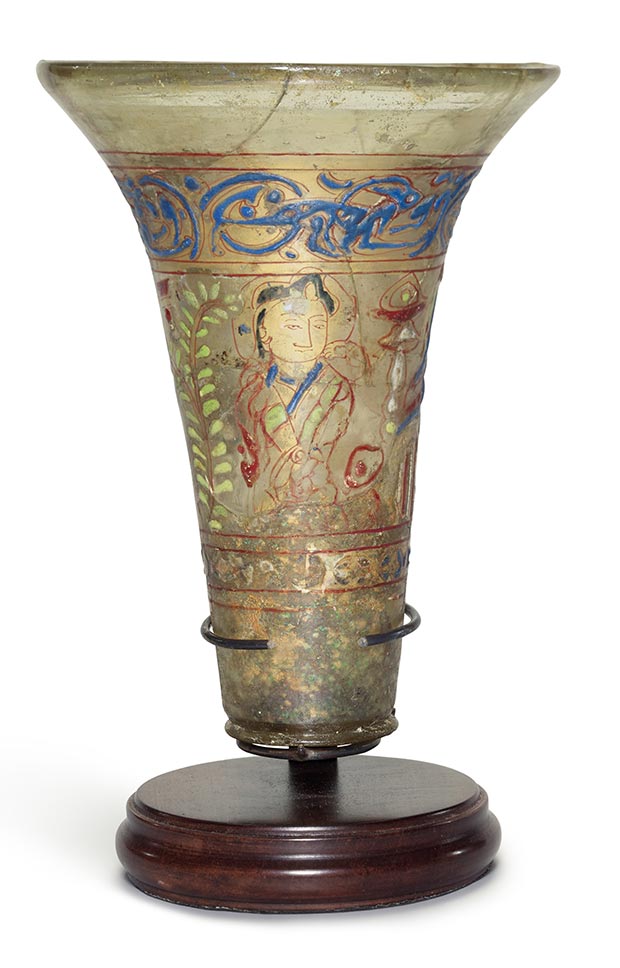 A Mamluk enamelled glass beaker with musicians, Egypt, late 13th century / Courtesy of Sotheby's
A Mamluk enamelled glass beaker with musicians, Egypt, late 13th century / Courtesy of Sotheby's
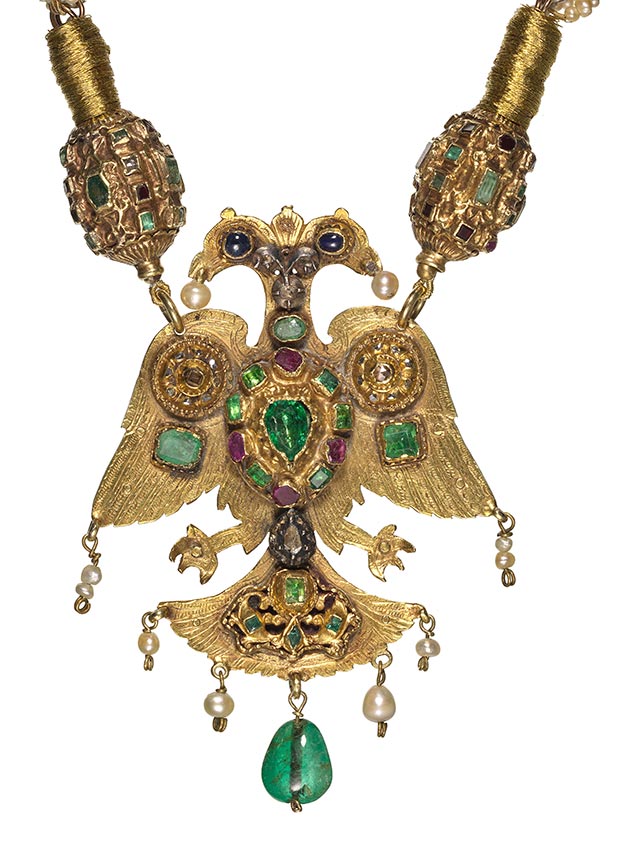 A Gem-Set Gold Double-Headed Eagle Pendant, Morocco, 18th Century / Courtesy of Sotheby's
A Gem-Set Gold Double-Headed Eagle Pendant, Morocco, 18th Century / Courtesy of Sotheby's
Comments
Add a comment